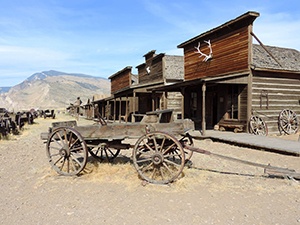 If I must sit in another meeting, read another business book, or listen to another podcast about millennials my head may explode. Correct me if I am wrong (there is a comment section below) but we are going about this the wrong way. We keep talking about millennials, but has anyone made any progress in mending the perceived divide between the generations in our workforce?
If I must sit in another meeting, read another business book, or listen to another podcast about millennials my head may explode. Correct me if I am wrong (there is a comment section below) but we are going about this the wrong way. We keep talking about millennials, but has anyone made any progress in mending the perceived divide between the generations in our workforce?
I am going to take you through an all-to-familiar scene. It always starts this way:
**** Cue the old-timey western music ****
**** Gunslingers step out into the dusty streets ****
**** Cue the tumbleweeds ****
**** Camera pans to the gritty veteran****
“‘Millennials just don’t really want to work hard. They want to come in late, protest everything, wear jeans, overspend on Starbucks, and overindulge on craft beer. Flexible work environment really means mid-day naps, frequent social media checks, and less productivity. You see, they only want to do the fun parts of their jobs and they ignore the necessary parts in hopes someone will come by and do it for them.”
**** Camera angle changes to behind the veteran, and slowly zooms though the wind and dust to focus on the millennial ****
“Is that what you think I do? You know almost none of those descriptors apply to me.”
**** Camera pans back to the veteran ****
“I know, but you’re not really a millennial. You’re not like most of the employees your age.”
**** Scene ends ****
The preceding was an actual conversation I had. And the example here is mostly one-sided. It’s not meant to be combative, I have certainly been on the other side of this conversation, too. The point is that we arrive at stereotypes and too often fail to push the conversation past those stereotypes to reach the individual humanity of our teammates.
I am frequently the youngest person at the table, and because my teammates have gotten to know me, they don’t apply the millennial stereotypes. But often there is real dissonance between teammates. Conversations like this are commonplace in organizations across the country, maybe even the globe. Perhaps you have even played one of the roles, but the truth is, it probably didn’t help fix any of the issues your team was experiencing.
Let’s assume every team exists to win. Winning can mean different things, but if you grant me this concession, you’ll see where I am going.
Raise your hand if you put “talk about your feelings” in your plans of action. You probably don’t, because feelings are not a crucial part of winning. This is for the same reason we don’t say, “Let’s put that person on the team, they have the best feelings.” Feelings are not a contribution and they are not a skill set.
I think we all get pulled down into feeling sorry for ourselves sometimes, but we can fix this with the following mental exercise:
- What does a team win look like?
- What does a personal win look like?
- Are these the same for me?
- If yes, work as hard as you can! Go. Fight. Win.
- If no, what is the problem, and what can you do to fix it?
If the solution is more compensation, more fringe benefits, or less work, you probably did not identify the real problem. You should start the exercise over again.
What’s The Risk?
What if we stop trying to find differences between ourselves and our teammates? What if we build merit-based expectations for our leaders and their teams? What if we take the time we spend trying to “solve” workplace generational conflicts and use it to define winning?
I think we would see a shift from the divisive stereotypes and unproductive complaining to more collaboration and success.
Let us provide solutions to the problems we identify. Amen.



